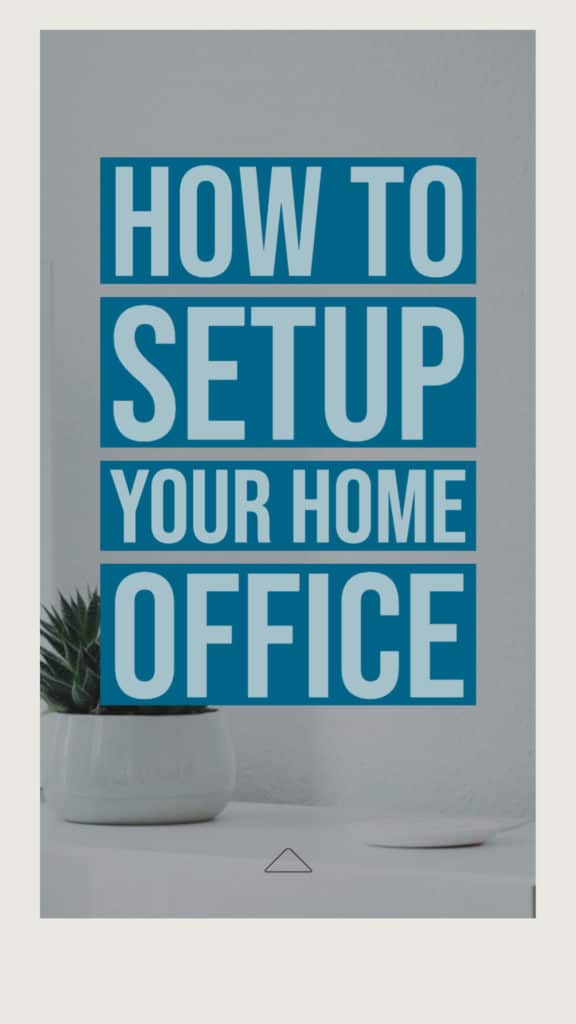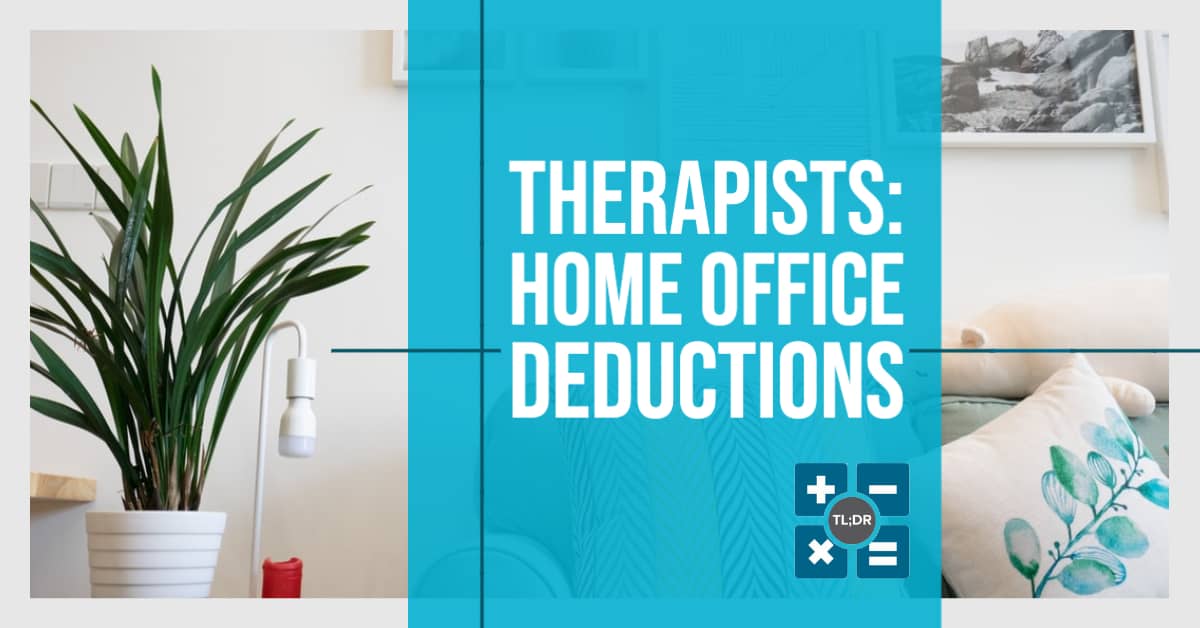You’re stuck at home during the quarantine, but you still have a practice to run. Maybe you’re meeting clients over Zoom or one of those other video services, or maybe you’re playing it old school and sticking with phone therapy. Maybe both!
Sure, you might not be paying office rent anymore, but due to COVID you might also be facing a downturn in business. A reduction in business isn’t because people don’t need therapy right now — in actuality, you may find that, your clients probably need therapy now more than ever. But the fact remains that some of your clients may have been laid off from their jobs and can no longer afford to pay full price, or perhaps can’t pay you at all.
What’s a therapist with cabin fever to do?
Or did quarantine show you that you can run your therapy practice out of your home and you are wondering how this affects your taxes?
Consider the Home Office Deduction.
Prefer to watch on YouTube? Watch here!
Home Office Tax Deduction Deal-Breakers

First and foremost, let’s talk about the #1 reason that disqualifies small business owners from using their home as an office:
To claim home office tax deductions, your home office must be a 100% dedicated business space.
We can’t stress this enough. If you’re doing your work at your kitchen bar, then it doesn’t count… unless you do absolutely zero cooking and never use the space for another person.
Seriously though, this is a super-important point. Rather than trying to come up with excuses for why a certain non-business use of your home office “doesn’t count,” think of parts of your house that you could conceivably cordon off for only doing work.
Do you have a spare room? What about removing your stuff from a walk-in closet and repurposing it as your home office?
Do you have space in a room that you can reserve just for office work? Do you have a desk on the side of your living room that you are only using for your therapy work when no one is home?
Now that that’s out of the way, let’s talk about some other requirements:
Your home office must be regularly used for business.
That’s right, it doesn’t count if you walk into your spare room for one hour a week just to open your business mail, then walk over to your master bedroom to do all your actual work. The requirements of a home office are exclusive, regular use.
If you are renting a business office separate from your home, ask yourself questions like these:
- Is that office set up to do your admin work? Or do you only have a sitting area for clients?
- Are you subleasing from another therapist’s office just for client sessions? If so, and you are doing your administrative work from your home, you might be able to take the deduction if you hit all of the other tests.
Let’s be reasonable.
While not listed as a specific requirement, keep in mind that you’re expected to back up your story with evidence. Take pictures of your office space, and don’t try to say that 60% of your 400 square foot studio apartment is an office space if you live there with a partner.
Home Office How-To

So, you have a reasonable, exclusive space that is used regularly for business. What’s next?
The first step is to measure the space. You’re going to use the square footage of your office space to make some calculations.
Step 2 is to determine whether you want to use the traditional or simplified home office rules.
- The Traditional home office deduction involves dividing your home office square footage by the square footage of your entire house or apartment.
- Multiply that amount by your mortgage or rent as well as utilities and any other relevant expenses that could reasonably be allocated to your office (so your Netflix subscription probably doesn’t count).
- Some expenses will be home office exclusive, like shelving, in which case 100% of these expenses can be taken. Again, be reasonable.
- The Simplified method is as quick as multiplying your square footage by $5.00 and taking that amount as your deduction. Done and done!
You can try both methods to see which one is more advantageous for your bottom line, or you could just stick with the simplified method because it’s easier to use and defend. It’s like the standard deduction, you just need to have documentation of your home office space.
This may all sound like a lot of work, but you’ll be thanking yourself when you get that sweet, sweet tax deduction.
TL;DR: Like most tax deductions, the home office deduction can be worth your while but it has some strict rules to it. We at TL;DR can tell you that it’s probably worth your time to at least give it a shot, especially if you use the simplified method of calculation. Let us know if you want some help with your home office calculation come tax time, and keep those receipts!
Need to ask a specific question or need general tax accountant advice? You can setup your first call here!






